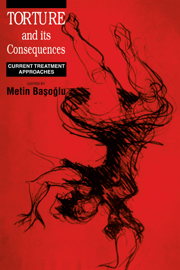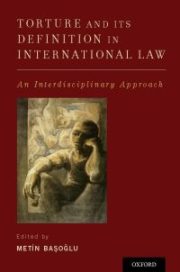Treatment of war and torture trauma
Our most recent work on war and torture trauma includes a clinical trial testing the efficacy of Control-Focused Behavioral Treatment in asylum-seekers and refugees in Istanbul. Results based on 60 cases are summarized below (see Başoğlu, 2022 for more details of the study.)
.Sample characteristics
Of the 60 refugees that completed treatment, 47% were from Democratic Republic of Congo, 18% from other African countries, 27% from Iraq, and 8% from other Middle Eastern and Asian countries. The study participants were referred for treatment by refugee care organizations in Turkey and those who had Posttraumatic Stress Disorder (PTSD) were consecutively recruited in the study. Only psychotic cases were excluded from the study.
The most commonly reported trauma experiences were witnessing war atrocities, exposure to bombings, sexual violence including gang rape (37%), and torture (32%). In most tortured cases, torture had been perpetrated by non-state actors (e.g. rebel groups, paramilitaries, etc.). Fifty-seven percent of the cases were female and the mean age was 25 (SD 10). Forty-seven percent were illiterate, or literate but had no schooling, or had only primary school education. None of the study participants were on any medication for traumatic stress problems and no psychotropic drugs were used in treatment.
Study design
The study did not include a control group but the non-specific effects of therapist contact and baseline assessment were examined in a subset of 25 cases by using a single-case multiple baseline experimental design. This included two baseline assessments conducted three weeks apart with no treatment in the interim period. Treatment was initiated after the second baseline assessment. The mean scores of the Clinician-Administered PTSD Scale (CAPS) – a measure of PTSD symptoms – showed no reduction at the second baseline, meaning that therapist contact had no effect on PTSD symptoms. This suggests that the improvement in PTSD symptoms at post-treatment can be attributed to the specific effects of treatment.
Study aim
As the efficacy of CFBT was established in previous studies with earthquake survivors, the main aim of this study was to examine the optimum number of treatment sessions required for significant clinical improvement in refugees. Accordingly, treatment duration was flexible and involved a maximum of 12 sessions. Treatment was terminated (and follow-up phase initiated) when a rating of ‘much / very much improved’ was obtained on Patient’s Global Improvement (PGI), a 1-7 scale used to assess overall clinical improvement (1 = very much improved, 2 = much improved, 3 = slightly improved, 4 = no change, 5 = slightly worse, 6 = much worse, 7 = very much worse). Our studies have shown that this is valid and reliable measure of clinical improvement. As it reflects patients’ own assessment of improvement, it is free from assessor bias.
Results
Of the 60 cases, 56 (93%) met the criterion of much / very much improved at some point during treatment, which corresponded to 82% reduction in PTSD symptoms (81% in tortured cases and 82% in non-tortured cases). Although four cases rated themselves as ‘slightly improved,’ their PTSD symptoms showed mean 71% improvement. The CAPS score at post-treatment was under 20 in 70% of the cases (indicating near-complete recovery), between 20 and 39 (mild / sub-threshold PTSD) in 27%, and between 40-59 (moderately severe PTSD) in only 2 (3%) cases. Thus, 97% of the cases were either nearly asymptomatic or had only mild PTSD symptoms at the end of treatment. This outcome measure based on CAPS score is used in clinical studies to assess the end-state functioning achieved by treatment. It correlates highly with recovery from the disabling effects of trauma on social, occupational, and family functioning.
Figure 1 shows how the minimum number of treatment sessions required for much / very much improvement is distributed in the whole sample. The black portion of each column shows the percentage of improved cases and the respective number on the horizontal axis indicate the total number of sessions received by those cases. Note that 5% of the cases improved after 3 sessions, a further 15% after 4 sessions, and so on. The whole columns indicate the cumulative rates of improvement. For example, 20% of all cases improved after 3 to 4 sessions, 43% improved after 3 to 5 sessions, and so on. The mean number of sessions required for improvement in the whole sample was 6, which corresponded to the 7th week in treatment. As can be seen in Figure 1, 55% of the cases improved after a maximum of 6 sessions.
Figure 2a and Figure 2b show how the treatment effects on PTSD and depression compare with those observed in our two randomized controlled studies with earthquake survivors. Depression was assessed in only 36 refugees due to unavailability of the patient-rated depression scale in some languages. Because the tortured and non-tortured cases showed almost the same level of improvement, they were pooled for this analysis. Study 1 included 31 cases treated with a single session of self-exposure instructions with no further therapist contact until post-treatment assessment at week 6, whereas Study 2 cases received one session of therapist-administered exposure to earthquake tremors in an earthquake simulator (45 minutes) followed by self-exposure instructions. Post-treatment assessment was conducted at week 6 in Study 1, at week 8 in Study 2 and at week 7 in Study 3.
Comment
The mean pre-treatment CAPS score among the refugees was 85, which indicates extremely severe PTSD, compared with 68 in Study 1 and 63 in Study 2, both of which fall into the category of severe PTSD. Despite such high levels of illness severity, the refugees showed greater improvement in both PTSD and depression than did earthquake survivors at post-treatment. This finding probably reflects the fact that the treatment was delivered to earthquake survivors in a single session, whereas the refugees received full-course CFBT. Note, however, that the improvement trends in the three groups converge at 6-month follow-up. This suggests that improvement with a single treatment session is slower but runs a steady course over 6 months, reaching the same level of improvement achieved by full-course treatment. This finding implies that CFBT can be administered on a largely self-help basis in war and torture survivors. Because the present study aimed at examining the optimum number of treatment sessions required for much / very much improvement, treatment had to be continued until such improvement occurred. It could have been discontinued earlier, as soon as the survivors showed sufficient reduction in avoidance behaviors (e.g. by 20%), thereby reaching a stage in treatment beyond which they would be capable of conducting exposure on their own. This hypothesis is well worth testing in future research. In any event, the findings suggest that war and torture survivors can be effectively treated with an average of six sessions.
These findings show that war and torture trauma is as responsive to an effective treatment as earthquake trauma. Such extensive recovery in the refugees occurred despite their adverse life circumstances in Turkey. Some were homeless and had no money to buy food. This shows that additional life stressors do not necessarily block response to a potentially effective treatment. Lack of compliance with treatment is the single most important cause of treatment failure with CFBT and difficult life circumstances affect treatment outcome only to the extent they make treatment attendance or conduct of homework exercises difficult. We were able to overcome such difficulties with minimal support (e.g. providing travel money for treatment attendance) during the course of treatment.
Considering that most rehabilitation centers for war and torture survivors around the world employ a lengthy (and therefore costly) rehabilitation program, often lasting more than a year, a psychological treatment involving an average of 6 sessions can be considered fairly brief. The present findings raise the prospect of even briefer treatment, possibly involving 1 to 3 sessions. CFBT might be helpful in reducing traumatic stress in some cases even when delivered on a solely self-help basis.






